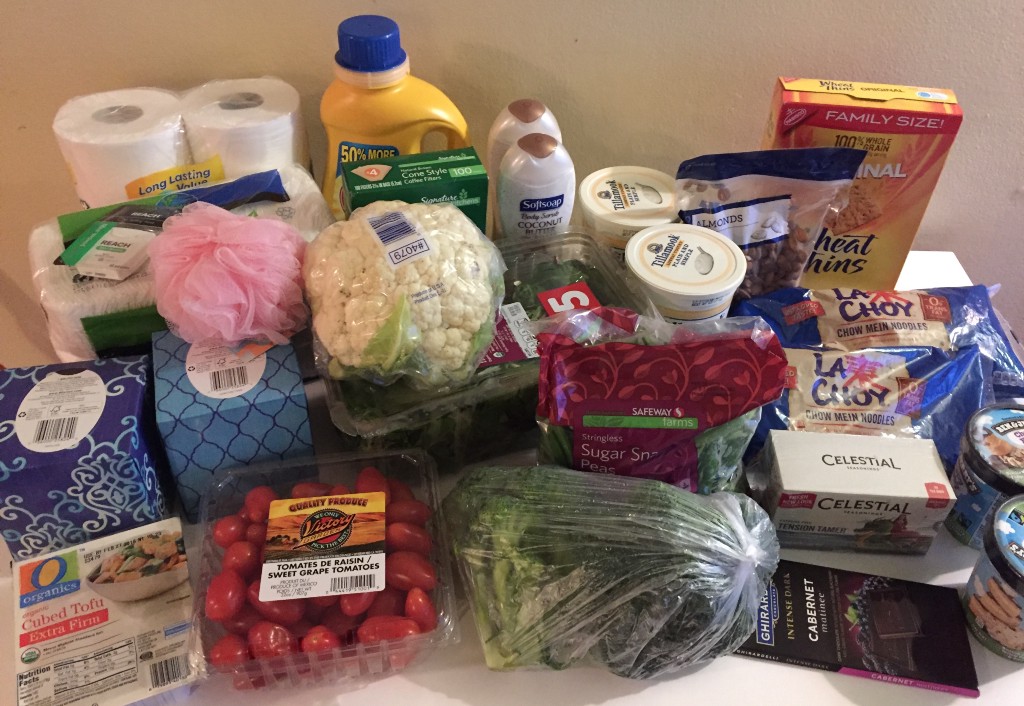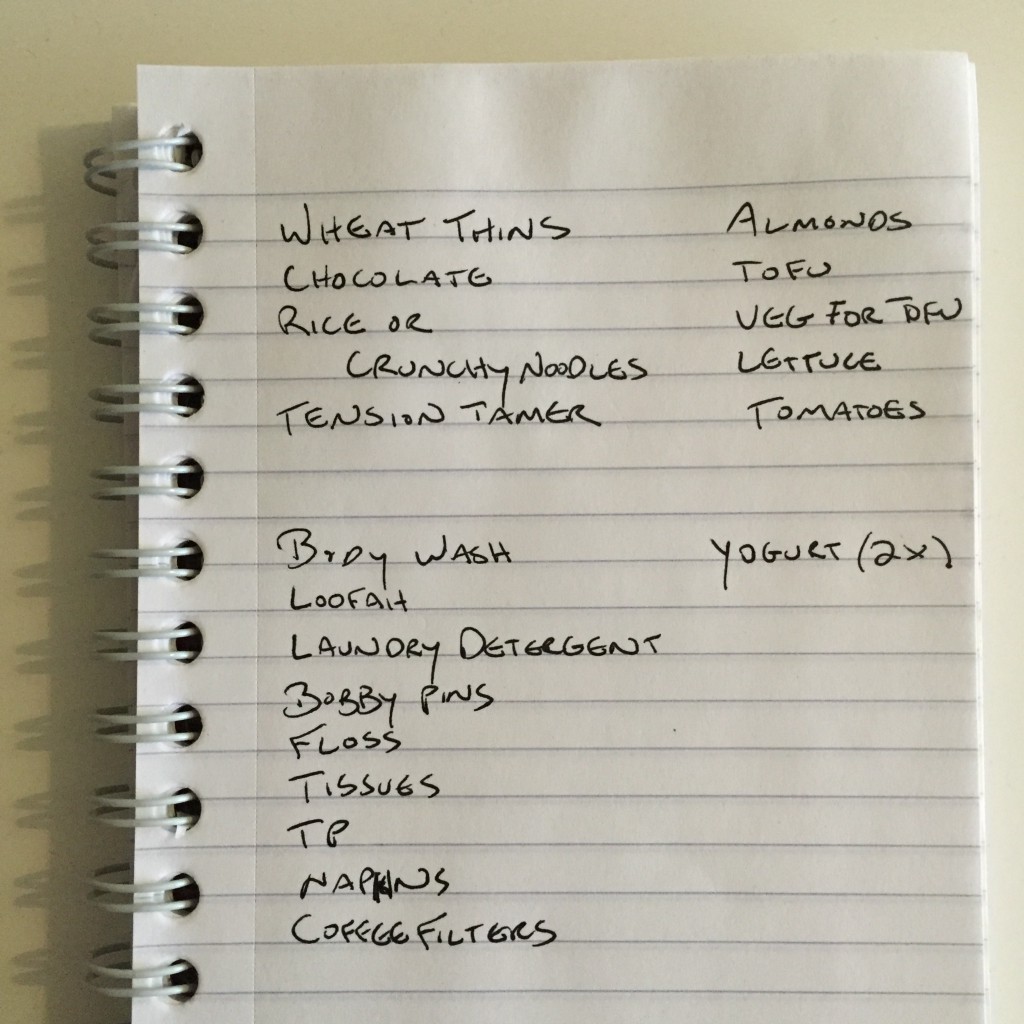Which Part of Your Grocery List Is the Most Expensive?

I was putting together my weekly grocery list, and instead of just using the piece of paper on which I had been steadily scribbling items as they ran out, I got inspired to divide my groceries into categories.

I was shocked to see how much of my grocery list was just paper: facial tissues, toilet paper, napkins, and coffee filters. (Does dental floss count as paper?)
And sure, it’s not every week that I need to replace both my bulk pile of recyclable napkins and my 100-pack of coffee filters, but I go through as much facial tissue and toilet paper as anyone else, which means I am buying paper products from the grocery store all the time.
I was also kind of shocked to see how little of this grocery list was food. Items like Wheat Thins and Celestial Seasonings Tension Tamer tea are sometimes incorporated into meals, but they’re just as often the stuff I shove into my mouth between the food.
The meals, on this list, come entirely from the produce column and the two quarts of yogurt I plan to cart home—plus, of course, the “rice or crunchy noodles.” (It’s probably going to be the chow mein noodles. I love that sesame tofu recipe I picked up from the Lenny Letter, but I have been eating a lot of rice lately. Since y’all have asked how I do leftovers, this weekend I tossed a bunch of rice into the beef stew I pulled out of the freezer so it would stretch through Monday.)
Here’s the real question: which part of this grocery list is the most expensive? When I look at my weekly $75–100 grocery bill, where’s all this money going towards?
Well, it turns out that only $13.05 of my grocery bill went towards paper. ($14.30 if you count dental floss as “paper.”)
$14.99, meanwhile, went towards soap—both the kind I put on my body and the kind I put on my clothes—with another $2.99 for the loofah.
$9.99 went towards a 16-ounce bag of almonds, and yes, I would have bought from the bulk bin except it was (once again) empty.
$37.33 went towards the stuff that will make up the bulk of my actual meals, including $24.45 for the the vegetables, $1.99 for the tofu, $4.99 for the chow mein noodles, and $5.90 for the yogurt.
Almonds and Wheat Thins often make an appearance at lunch, but they’re also snacks, so let’s add that up too: $9.99 for the almonds, $3.99 for the Wheat Thins, $7.00 for two pints of Ben & Jerry’s, $2.99 for a bar of Ghirardelli, and $2.50 for Tension Tamer tea gets me to $26.47 for snacks and desserts, although I could toss maybe $4 of that back into “meals” for the days when I throw a handful of almonds into my salad.
It looks like, when you do all of the math and consider my entire $98.19 grocery bill, I’m spending about 35 percent of it on household stuff (paper products, hygiene), 45 percent of it on “food that actually goes into my meals,” and 20 percent on snacks. [EDIT: I originally set aside 9.5 percent for taxes, but as Billfolder amanda w. reminded me, we don’t pay taxes on a lot of our groceries.]
What about you? Have you broken down your own grocery bills to figure out exactly where your money is going? Do you also feel like, no matter how you plan your meals, you can’t make it from lunch to dinner without a significant snack? (It really does make sense that I spend 20 percent of my grocery money on snack food, because that represents at least 20 percent of my eating.)
If you have broken down your grocery bills, what do you feel like you’re spending too much on? Clearly, in my case, it’s almonds—but if I get rid of them, I’ll have to find another source of snack protein to eat instead, and it isn’t going to be cheese because I already told you what I think of cheese.
Also, do the balances shift when you’re shopping for multiple people? I’d be curious if the household/meals/snacks balance stays roughly the same, or whether it changes with more people in your household.
Let’s talk shopping lists—and spending patterns—in the comments.
Support The Billfold
The Billfold continues to exist thanks to support from our readers. Help us continue to do our work by making a monthly pledge on Patreon or a one-time-only contribution through PayPal.
Comments